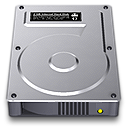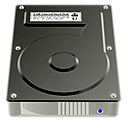|
May 19, 2014 - Hammondsport Mac Users Group ATTENDING : Tom B, Al J, Gene N, Nancy D, Gary B, Dottie E. TOPIC : BACKUP YOUR MAC  
HELPFUL CONTEXTUAL MENU Right-click (or control-click) on any file, folder or image to produce a handy contextual menu of options such as:
7 WAYS TO BACKUP YOUR MAC FILES
1) USB FLASH DRIVE - - - simply insert drive into computer USB port, then drag files into it to make a copy - larger USB drives are now available in 8GB, 16GB, 32GB, 64GB - for example USB 16GB Sandisk can currently be found on eBay for $8.
2) BURN A CD / DVD - - - right-click on folder or file to be burned, follow the built-in Mac directions, insert a new CD-R disc or DVD-R - you can backup 700MB of data on a CD and up to 4.7GB on a standard DVD.
3) E-MAIL - - - send your backup files to yourself to store on-line in your e-mail account - it helps to compress them to.zip format first by right-clicking.
4) DROPBOX or iCLOUD - - - Dropbox is free to setup an account on-line - iCloud is provided free with OSX 10.7,10.8 and 10.9 - use your Apple ID to access it. Upload your backup files to either place - both Dropbox and iCloud are secure folders provided to you on a trusted site (such as Apple) - Tom demonstrated how easy it is to transmit a large file via Dropbox by dropping a picture file into his Mac's Dropbox, then clicking the Share Link to send it to Dottie's email address where she could download the image to her Mac.
5) DISK IMAGE - - - create a small, secure Disk Image (.dmg) by using the Disk Utility found in your Mac Utilities Folder - the disk image can be securely locked with a password, e-mailed to on-line storage, burned to CD or copied to a USB drive for portability - an encrypted disk image is a good place to keep important pin numbers, passwords and private data while traveling - see step-by-step tutorial
6) SHARED COMPUTER - use a 2nd computer (maybe an old one) that can be connected via:
7) EXTERNAL HARD DRIVE - buy a backup 320GB HD and USB enclosure for $59 at OWC (Other World Computing) - Tom demonstrated how easy it was to assemble the HD with USB enclosure, plug it into his MacBook Pro, then copy his entire internal HD using the free version of SuperDuper which makes the external HD a bootable clone.
3 GREAT BACKUP SOFTWARE APPS
1) SuperDuper! - free to use forever in basic copy-all level - $27 to unlock advanced features.
2) Carbon Copy Cloner - newest version for Snow Leopard to Mavericks ($39) - an older free version (3.4.7) is still available for Tiger and Leopard.
3) Time Machine - free - built into every Mac - what makes Time Machine different from other backup applications is that it not only keeps a spare copy of every file, it remembers how your system looked on any given day—so you can revisit your Mac as it appeared in the past. Time Machine keeps hourly backups for the past 24 hours, daily backups for the past month, and weekly backups until your backup drive is full.
HARDWARE Logitech M185 Wireless Mouse - $9.99 (currently on eBay) - one AA battery, tiny USB transmitter - works great!
OTHER QUESTIONS ASKED AT MEETING Q - Why is my HD getting very sluggish?
Hammondsport Mac Users Group - Hammondsport, NY 14840 - www.hportmug.com
|